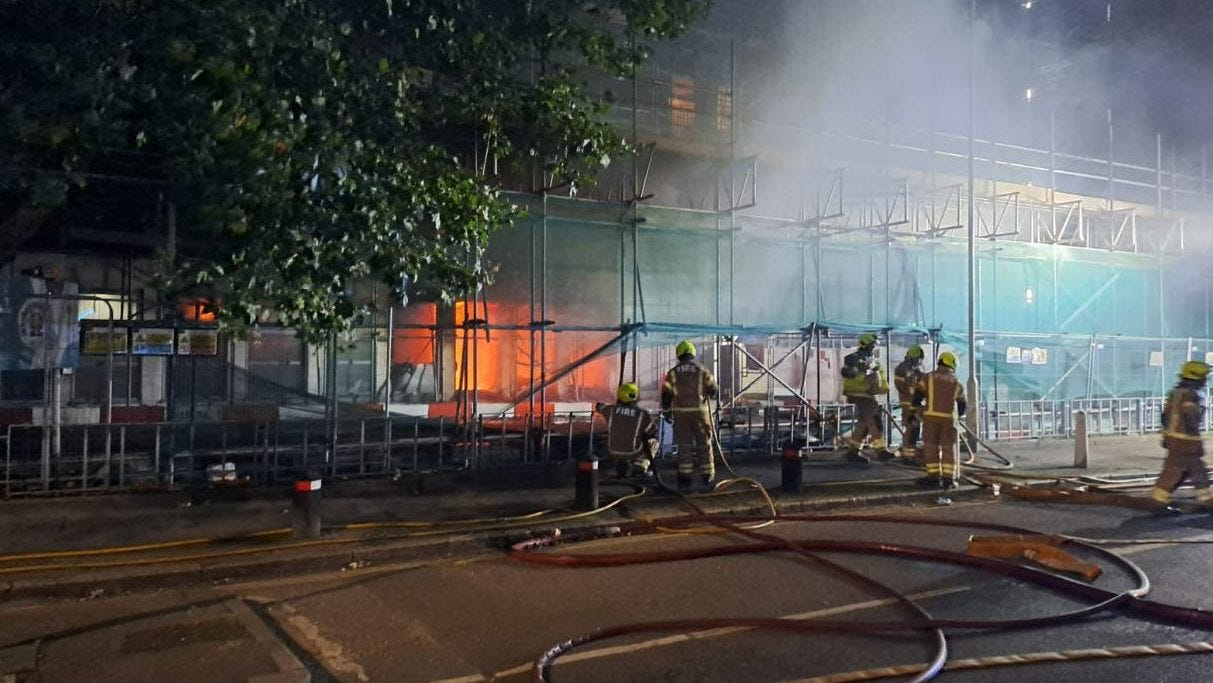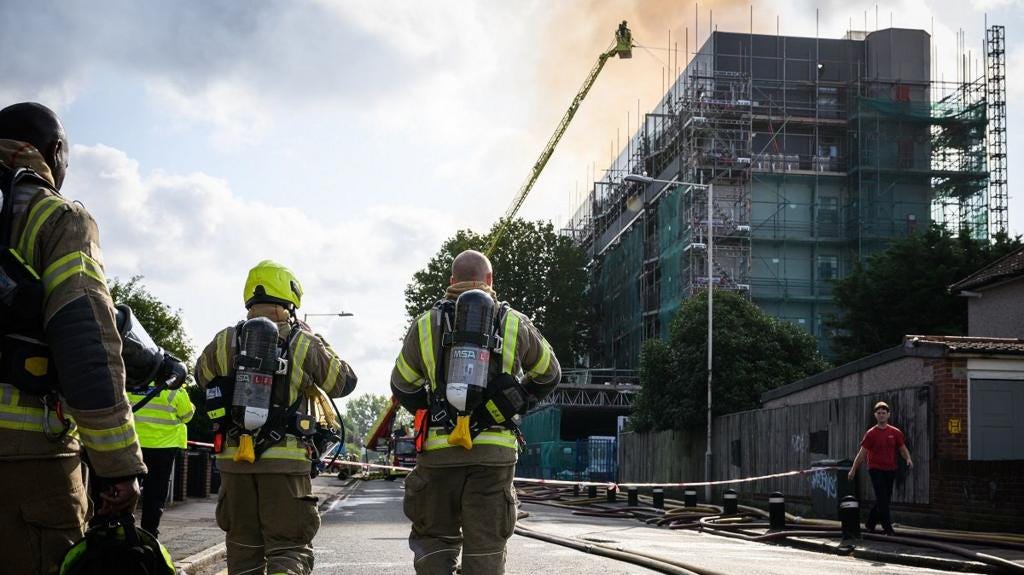Dagenham Fire
Exposes Lack of Progress on Building and Fire Safety Ahead of Grenfell Report
More than 200 firefighters were deployed overnight on Monday 26 August, to combat a fire that broke out in an apartment block in Dagenham, London. The building had previously been identified as a high-risk location by fire brigades, yet it had not seen sufficient safety improvements, similar to other localities across the country that represent housing hazards due to slow progress on necessary fire and building security measures.
London Fire Brigade Commissioner Andy Roe confirmed that the tower block had “a number of fire safety issues” known to the service. Matt Wrack, General Secretary of the Fire Brigades Union (FBU), condemned the situation as a “national scandal.”
“Time and time again, these warnings have been ignored by public authorities and by central government. This must change immediately,” Wrack insisted.
The Dagenham fire comes just days before the final report of the Grenfell Tower Inquiry is set to be published. The similarities between the recent fire in Dagenham and the Grenfell Tower fire in June 2017, which killed 72 people, are difficult to ignore. Both incidents involve buildings with inadequate cladding, a factor believed to have exacerbated the fires.
“Once again, a fire has erupted in a residential building wrapped in inflammable cladding. There needs to be an urgent and swift investigation into how this has been allowed to happen,” Wrack said.
Fortunately, the Dagenham fire resulted in no casualties, but the incident has reignited calls for improved building safety. Grenfell United, a group formed by survivors and families of the Grenfell fire, criticized the lack of progress since the 2017 disaster. The fact that the best outcome in a fire is a near miss “speaks volumes about the progress made since June 14, 2017,” the group said in a statement.
Recent data from the FBU adds to an already worrying picture. Since 2010, cuts to public service have led to the loss of 12,000 firefighter positions across the UK, with London alone losing over 1,300. The union also highlighted that some firefighters might be counted twice in official statistics because they—some 4,000 of them—hold more than one type of contract, suggesting the actual shortfall may be even worse.
These staffing reductions have contributed to slower emergency response times, increasing risks to public safety. “With flooding, wildfires, and storms on the rise due to the climate emergency, firefighters are being asked to do more with less,” Wrack said.
In light of these issues, trade unions and community activists are calling for immediate and decisive action from the Labour government. They are demanding urgent and substantial investment in fire and rescue services, along with the implementation of building safety measures to prevent future tragedies.






